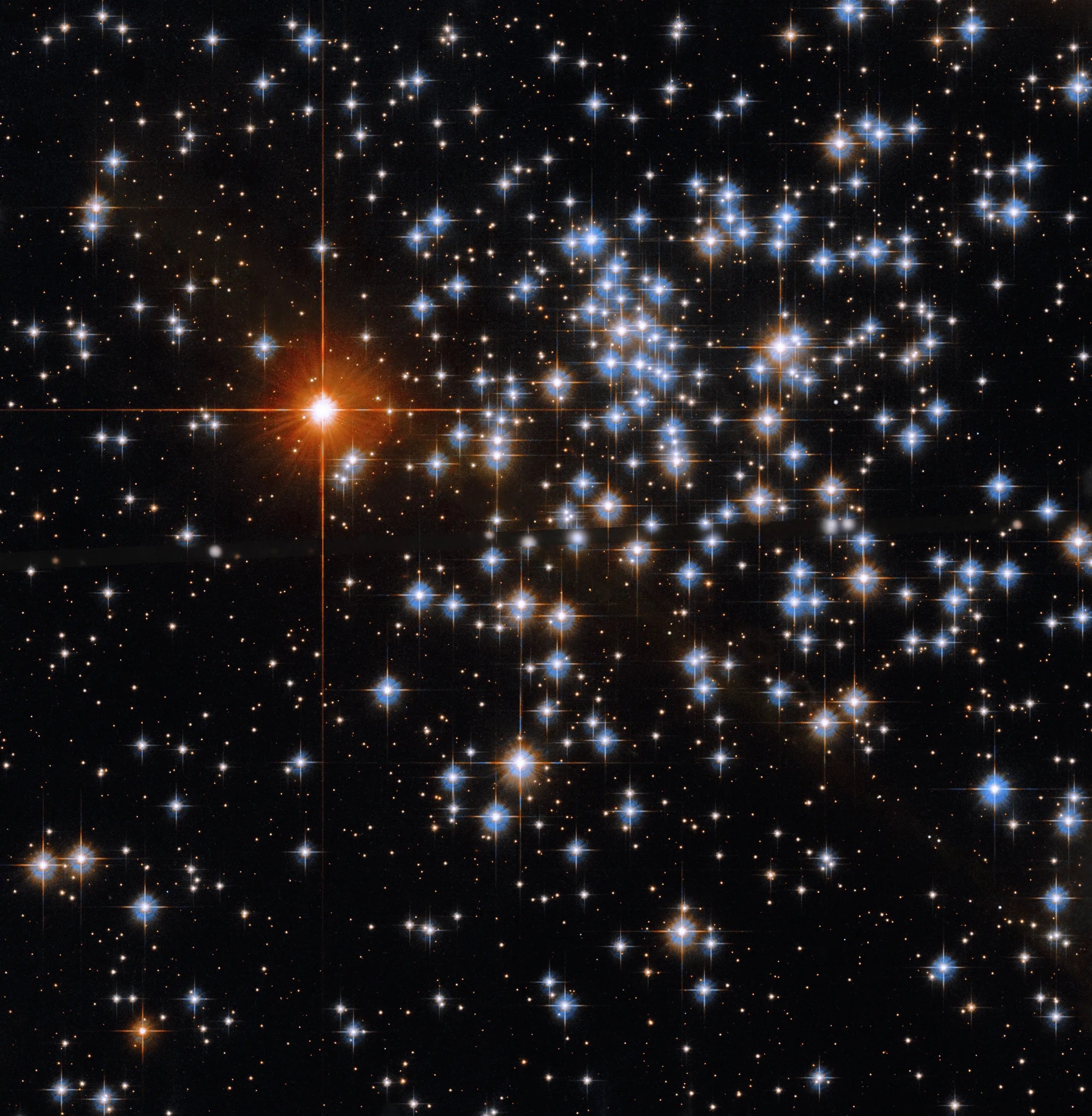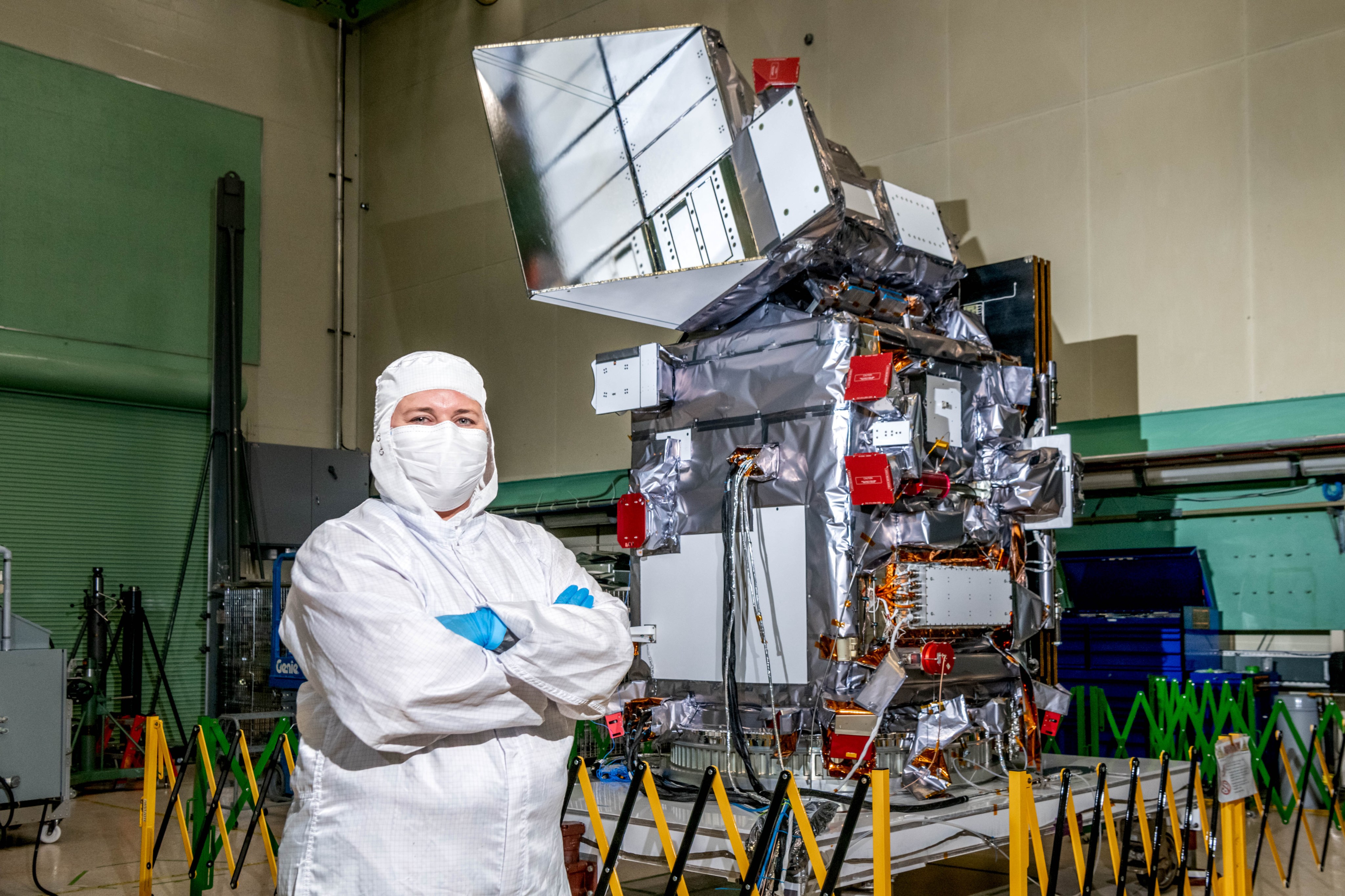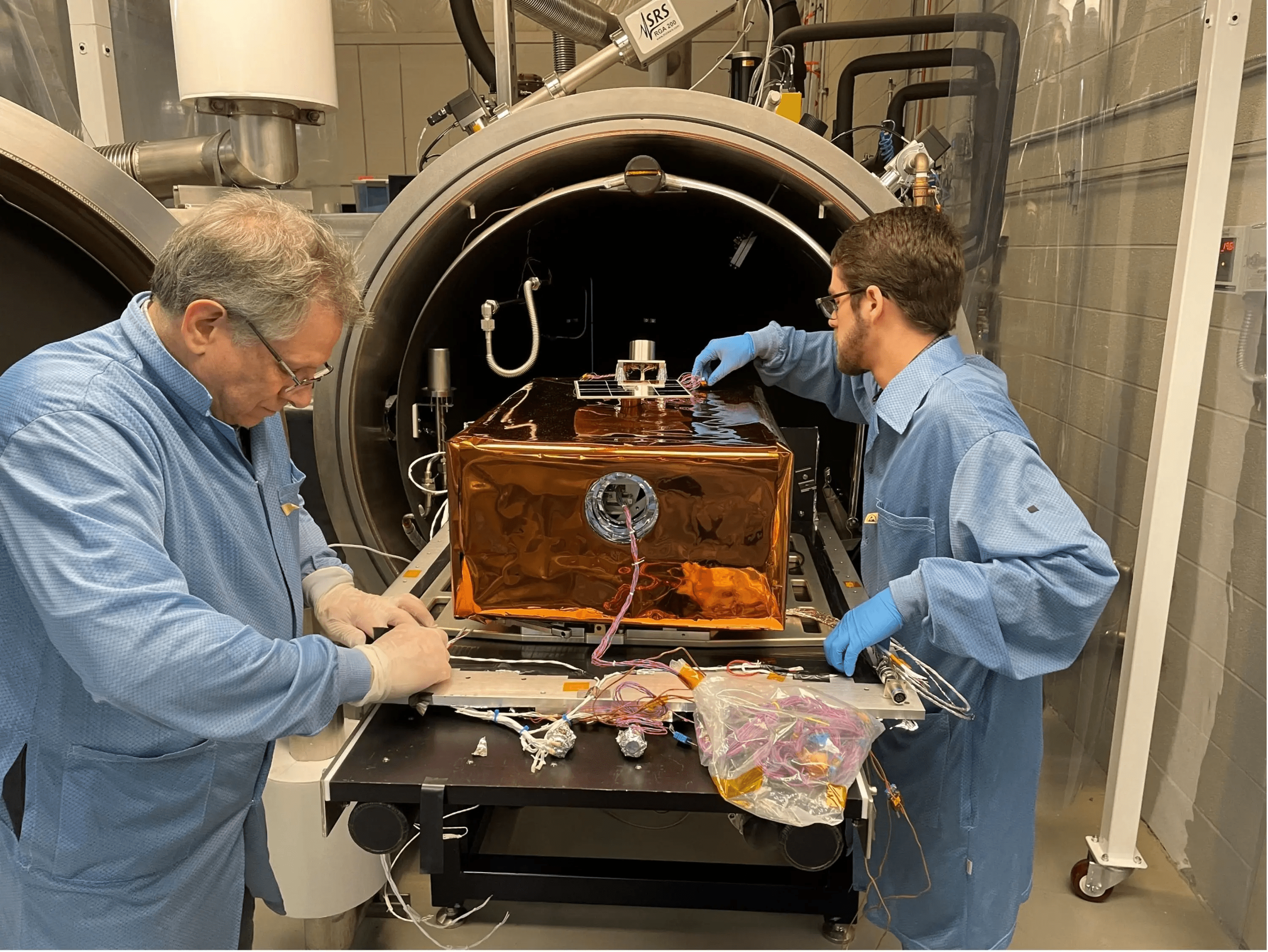2 min read

This glittering group of stars, shining through the darkness like sparks left behind by a firework, is NGC 2660 in the constellation Vela, best viewed in the southern sky. NGC 2660 is an open cluster, a type of star cluster that can contain anywhere from tens to a few hundreds of stars loosely bound together by gravity. The stars of open clusters form out of the same region of gas and dust and thus share many characteristics, such as age and chemical composition. Unlike globular clusters – their ancient, denser, and more tightly-packed cousins – open clusters are easier to study since astronomers can more easily distinguish between individual stars. Their stars can be old or young, and they may disperse after a few million years into the spiral or irregular galaxies where they are born.
The spikes surrounding many of the stars in this image are “diffraction spikes,” which occur when the glow from bright points of light reflects off of Hubble's secondary mirror support. The bright red object to the left with the very prominent diffraction spikes is a foreground star that is not part of the cluster. Hubble observed this open cluster as part of a program to study the ages of white dwarf stars in open clusters.
Media Contact:
Claire Andreoli
NASA's Goddard Space Flight Center, Greenbelt, MD
301-286-1940






